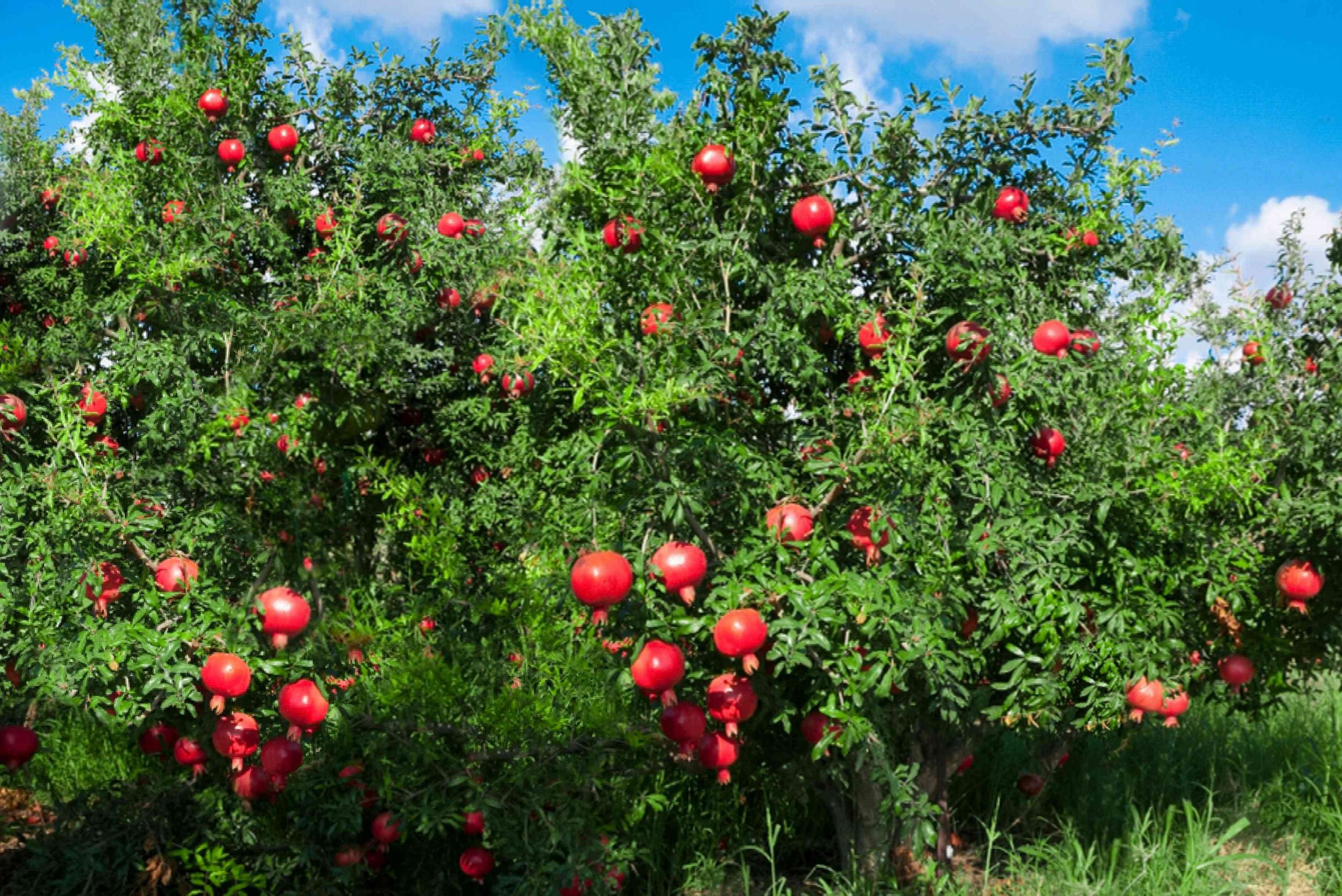Pomegranate trees are a delight to grow in your garden. Their glossy leaves, brilliant blooms, and of course their tasty fruit make them a prized addition. With the right care and conditions pomegranate trees can thrive and reward you with a bountiful harvest year after year. Let’s explore how to successfully grow these charming fruit trees.
Choosing a Variety
There are over 500 varieties of pomegranate trees, offering a diverse range of growth habits, climate tolerance, harvest times, and fruit qualities. Popular varieties like ‘Wonderful’, ‘Sweet’, and ‘Early Foothill’ are widely available from nurseries. When selecting a variety, consider your climate and space limitations. More compact dwarf varieties like ‘Nana’ are ideal for small yards. Cold hardy types like ‘Cloud’ and ‘Russian 18’ are recommended for cooler regions. Late season varieties like ‘Salavatski’ extend the harvest into winter.
Planting Your Tree
Pomegranate trees grow best in zones 7-10, though some varieties tolerate cooler climates They require full sun exposure and well-drained soil Dig a hole twice as wide and just as deep as the root ball. Place your tree in the hole and backfill with native soil, gently firming it around the base. Water thoroughly after planting. Space trees 12-15 feet apart for adequate air circulation and sun exposure. Dwarf varieties can be spaced as close as 6-9 feet. Pomegranates can also be grown in containers on patios and decks. Select a 15+ gallon pot with drainage holes.
Caring for Your Tree
Pomegranate trees need minimal care when properly established. Here are some tips for keeping your tree healthy and productive:
-
Watering: Water young trees every 2-4 weeks during dry periods, applying 2-3 inches of water. Mature trees are quite drought tolerant but benefit from occasional deep soakings.
-
Fertilizing: Apply a balanced fertilizer in early spring and again in late summer. Avoid over-fertilizing, which can reduce fruiting.
-
Pruning: Prune suckers and any dead or damaged growth. Remove inward facing branches to open up the canopy. Thin overly dense fruit clusters.
-
Pest control: Monitor for pests like whiteflies, scale, and thrips. Apply horticultural oils or insecticidal soaps to control infestations.
-
Winter care: In colder climates, wrap or coat tree trunks to protect from frost cracks. Mulch the root zone for insulation.
Harvesting Heavenly Fruit
You can begin harvesting pomegranates 3-5 years after planting. Ripe fruits turn a deep red color and develop a faceted shape. They make a metallic sound when tapped. Use pruners to clip the fruits’ stems rather than pulling and risking damage. Harvest pomegranates before fall frosts but after the leathery skin fully colors up. The fruits keep for months when stored cool and dry.
To open pomegranates, score the skin vertically in quarters. Soak in water and gently separate the arils from the pithy inner membrane. The juicy ruby arils are a delicious addition to salads, desserts, juices and more. The astringent peels can be used to make natural dyes.
Troubleshooting Problems
Pomegranate trees are generally tough and unfussy. But improper growing conditions can lead to issues like:
-
Poor fruiting: Insufficient sunlight, over-fertilizing, overwatering, and lack of pollination can limit fruit set. Ensure proper care regimen and plant a second variety for cross-pollination.
-
Leaf drop: Premature leaf drop can indicate overwatering or nutrient deficiencies. Check soil drainage and fertilize appropriately.
-
Pests: Common pests are easily controlled with horticultural oils and insecticidal soaps. For severe infestations, use neem oil or pyrethrins.
-
Diseases: Prevent fungal diseases like leaf spot by pruning for open air circulation and avoiding overhead watering. Remove and destroy infected plant parts.
The Ornamental and Edible Pomegranate
With their vibrant blooms, attractive foliage, and of course their tasty fruit, pomegranate trees are a wonderful addition to any landscape. They combine visual beauty and productive harvests. Pomegranates thrive with minimal care in the right climate and conditions. Do your research, select an appropriate variety, and tend to your tree’s basic needs. You’ll soon be enjoying this classic fruit straight from your own garden.
Sweet Pom taste from your own garden.
Meticulously planted, grown and nurtured for success, our Pomegranate Trees offer home-grown taste and easy benefits. From seedless growth to year-over-year harvests, you get the best of the best with our Pomegranate Trees.
How to Grow Pomegranate Trees
Different types need different planting instructions, but they all need to be grown in the right growing zones (or inside). The most important factors for Pom success? Sunlight and watering needs. Most of them like full sun, or 6 to 8 hours of sunlight a day, and well-drained soil, but the exact care instructions will depend on the type you choose.
And planting your Poms is hassle-free. Find a spot with soil that drains well or a pot big enough to hold your tree’s root ball. Then, put the tree in the pot and fill it back up with soil. Finally, water the surrounding soil to settle your treeâs roots and mulch to conserve moisture for best results.
HOW to PLANT and GROW POMEGRANATES, plus WHEN to HARVEST, HOW to EAT, and what to do about BUGS
FAQ
How long does it take for a pomegranate tree to bear fruit?
Is a pomegranate tree easy to grow?
Where should I plant my pomegranate tree?
Where do pomegranate trees grow in us?
- The Ultimate Guide to Growing Strawberries in Raised Beds - August 8, 2025
- No-Dig Garden Beds: The Easiest Way to Grow a Beautiful Garden - August 6, 2025
- How to Protect and Preserve Wood for Raised Garden Beds - August 6, 2025

